
Christmas time around the world doesn’t just mean twinkling lights and shopping, it means whole cities transforming into winter wonderlands, historic squares bursting with artisan stalls, processions that draw locals and visitors alike, and parades that fuse culture, faith and festivity into unforgettable experiences. From centuries-old markets in medieval European towns to lively holiday festivals in modern cities, there’s something deeply satisfying about stepping into a place where holiday traditions are rooted in history and reinterpreted by today’s travelers. Let’s GLOW!
1. Vienna, Austria – Christmas Markets Among Palaces

Tradition
Vienna is one of those cities where the Christmas market tradition is something the city is extremely proud about. You stroll its elegant streets and you feel that these fairs have been around for ages. In fact, the forerunner to what we now call the Christmas market dates back to Vienna’s “Dezembermarkt” or “Krippenmarkt” around the year 1294-1298, when Emperor Albrecht I of Austria granted shop-keepers rights to hold a special market to prepare for winter. Over time this morphed into the modern Christkindlmarkt tradition, and Vienna now hosts several major holiday markets, for example, the market at Rathausplatz (City Hall Square) with over 150 wooden stalls, a huge Christmas tree, crafts, and seasonal food.
Historically, these markets were about more than just gifts: they were social gatherings in the Advent period (the four weeks before Christmas) where locals stocked up, met neighbors, listened to carols, and the aroma of roasted chestnuts and mulled wine (Glühwein) filled the air. Today they have become a bridge between tradition and tourism, but the historic buildings, the church concerts and the artisan stalls keep the feel fairly authentic.
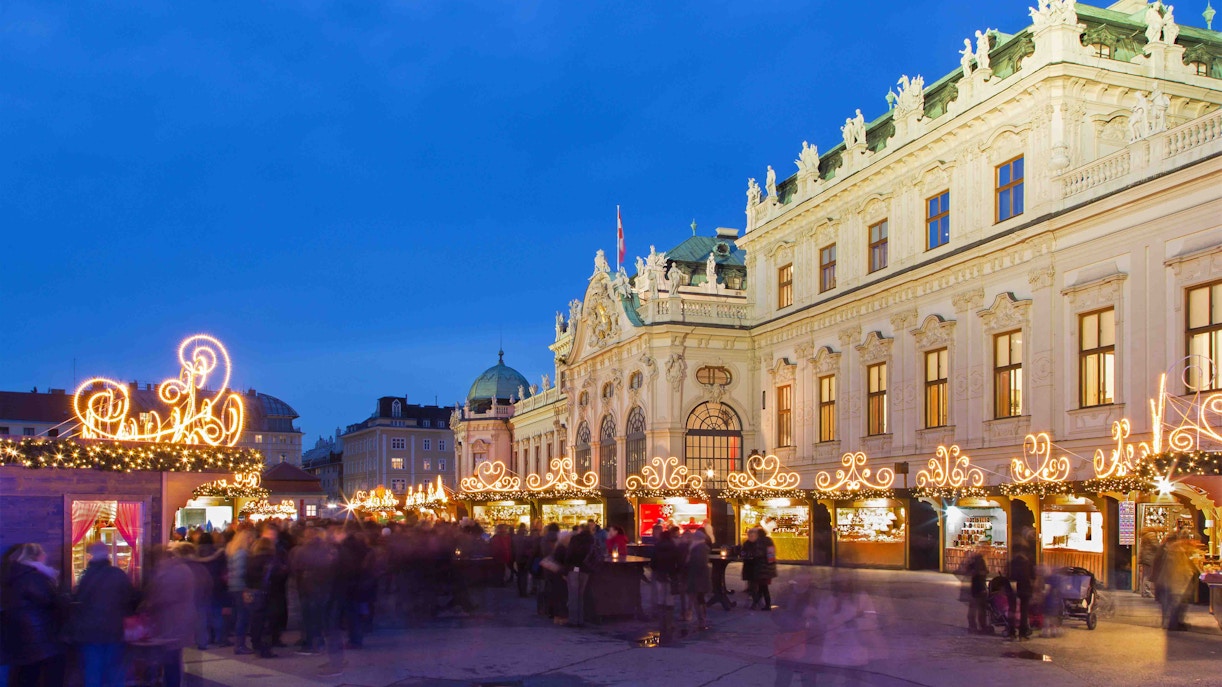
What to Do & How to Make the Most of It
- Visit the main market at Rathausplatz early in the evening when the lights come on — the tree and the ice rink (if open) create great photo sets.
- Wander to the smaller markets too: e.g., at Schönbrunn Palace (Schloss Schönbrunn) for a more relaxed, family-friendly vibe.
- Sample local treats: roasted chestnuts, Vanillekipferl, hot punch, Glühwein. Support stalls that feature local crafts rather than mass imports.
- For a more sustainable experience: opt for public transport (Vienna has excellent train/tram network), use reusable mugs if offered (some markets charge a deposit).
- Weather tip: December in Vienna tends to be cold (around −1 to +5 °C), maybe snow. Dress in layers, waterproof shoes.
- Safety and culture tip: Markets are crowded after dark — pickpocket risk is higher, so keep valuables secure. Respect local customs (e.g., quiet respect in churches, refrain from overly loud behaviour in residential districts).

Planning Advice
- Book accommodation well ahead for December (Nov-Dec is high demand).
- If looking to attend special concerts (many happen in municipal halls nearby) reserve early.
- Arrive mid-November if you want earlier access before peak crowding, or early December — avoid last-minute (23–24 Dec) when some stalls close.
- Check market opening dates — Vienna’s main market often opens mid-November and runs to just after Christmas.
2. Nuremberg, Germany – The Classic Christkindlesmarkt

Tradition
The Nürnberger Christkindlesmarkt in Nuremberg is arguably the archetype of a German Christmas market — and one of the most famous globally. According to documentation, it has roots going back to at least the early 16th century, though the exact origin is debated. The term “Christkind” (Christ-child) evokes the gift-bringing tradition in many German towns. The market is held in the Hauptmarkt, the central square of Nuremberg’s old town, and features dozens of wooden huts selling crafts, ornaments, gingerbread (Lebkuchen), and delicious aromas of mulled wine and sausages.
For many visitors, this market is the “classic” image of Christmas fairs: fairy-lights in medieval streets, the twin spires of the church in the background, a giant fir tree. Historically, these markets emerged in the late Middle Ages and were part of the winter-season trade fairs (Wintermärkte) in Germanic lands. Over the centuries, they evolved to serve not only practical goods but also festive décor, gifts and public entertainment, entwined with the Advent season.

What to Do & How to Make the Most of It
- Go early in the morning when the market opens, local artisans begin with fresh stock and you get less crowd-stress.
- Take part in a gingerbread-making workshop if available (many stalls offer interactive sessions).
- Try the iconic Nuremberg mini sausages (Drei im Weggla) and mulled wine, pick stalls with signage indicating local/regional sourcing to support responsible vendors.
- Nighttime: come back when the lights are on, for a very romantic atmosphere.
- Weather tip: Expect chilly winter conditions (often below freezing at night). Waterproof boots and a warm hat/gloves are a must.
- Safety and culture: Famous for being touristy — so go off peak (weekdays) to avoid long lines. Also, respect that many locals visit just for the atmosphere rather than purchase, so give space and be polite.

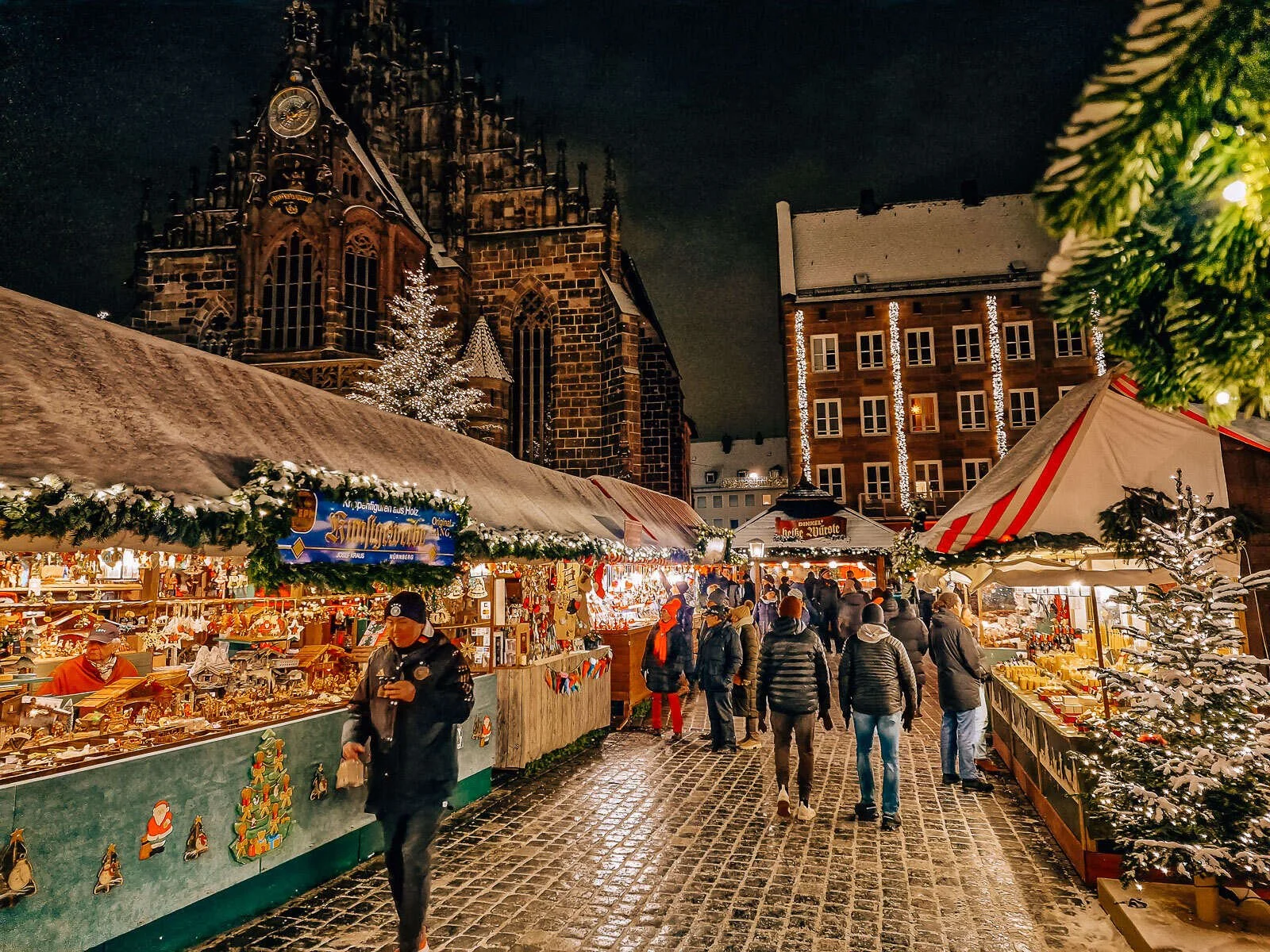
Planning Advice
- Book your city-centre hotel or guesthouse well in advance — this market draws 2 million visitors each year.
- Flights/trains: arrive the day market opens (often late Nov) so you catch the full duration.
- Many stalls close around 23 December; if you stay later you may find a quieter atmosphere but less variety.
- Consider combining with nearby German or Austrian markets for a festive circuit.
3. Strasbourg, France – “Capital of Noël”

Tradition
Strasbourg, in the Alsace region of France near the border with Germany, has earned the nickname “Capitale de Noël” (Capital of Christmas) for its rich festive tradition. The first documented market in Strasbourg dates back to 1570, making it one of Europe’s older examples of the Christmas-market phenomenon.
The city’s mix of French and German cultural heritage makes the market especially charming: the half-timbered houses, winding alleys, and historic cathedral backdrop create a unique setting. The market here extends through multiple squares: Place Kléber, Place Broglie, etc. In recent years it has grown to include over 300 stalls, an enormous tree (grand sapin) adorned each year, ice-rink, and light trails.
Historically, the connection between winter markets and the Advent season in this region goes back to when towns needed to supply goods and warm food in the dark months, and the festive market became an opportunity for social gathering and religious preparation.

What to Do & How to Make the Most of It
- Make a plan to arrive before sunset so you can see the market in daylight and then enjoy the lights after dark — the transformation is magical.
- Sample Alsatian specialties: tarte flambée (flammekueche), vin chaud (hot spiced wine), kougelhopf, local gingerbread.
- Explore the small side-markets in nearby villages if you have time (Ribeauvillé, Riquewihr) for a quieter, more local scene.
- Choose accommodation at least 10-15 minutes walk from the old town; this allows you to enjoy early-morning market browsing without being in the busiest zone.
- Weather: Mid-late December can bring fog, damp cold, possibly snow — bring layers, thermal base, waterproof outer layer.
- Safety & culture: Strasbourg is a tourist-friendly city, but still keep usual urban travel awareness. For sustainable travel, support local crafts (rather than imported mass-produced). Choose public transit or walk between markets.
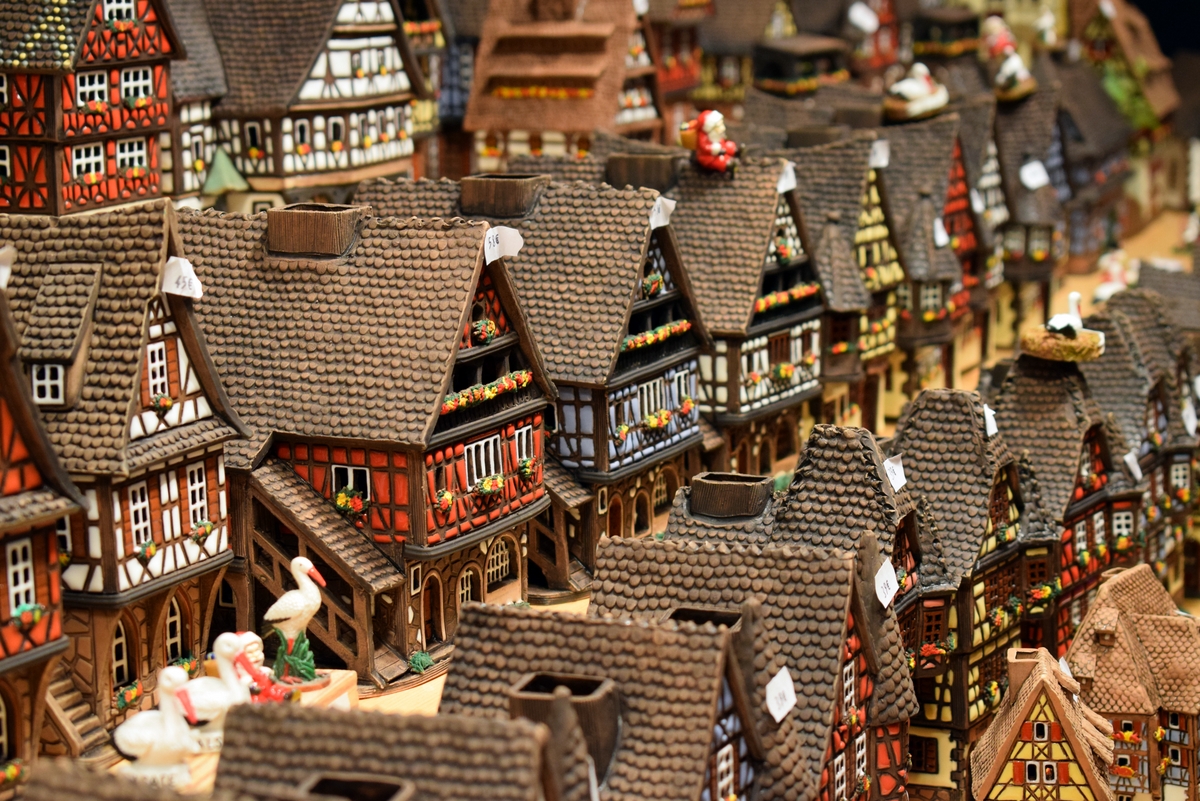
Planning Advice
- Booking: Secure lodging at least 4-5 months ahead if you want December peak (especially weekends).
- Most major markets start end of November and run to around 24 December or into early January — check current year dates.
- For a longer stay: consider staying 3-4 nights so you can visit the main market, side-markets, and take a half-day excursion into the Alsace countryside.
4. Zagreb, Croatia – Advent in the City

Tradition
Zagreb’s festive celebration, known as Advent in Zagreb, has built a strong reputation: it was voted “Best Christmas Market Destination in Europe” by the portal European Best Destinations for several years. While its Christmas-market history is more recent compared to medieval German towns, the city’s holiday revival has human-scaled charm, combining local tradition with lively events: ice-rinks, Ferris wheels, hundreds of stalls spread across multiple squares.
The market dates announced for 2025 are estimated at November 29, 2025 to January 7, 2026. The tradition aligns with the conversion of Advent into a public festival of light, music and winter-city fun in Central Europe. The cultural twist here: Croatian folk music, local pastries, festive light installations and workshops for kids. While not centuries-old, its rapid rise speaks to intelligent curation and appealing tourist + local mix.
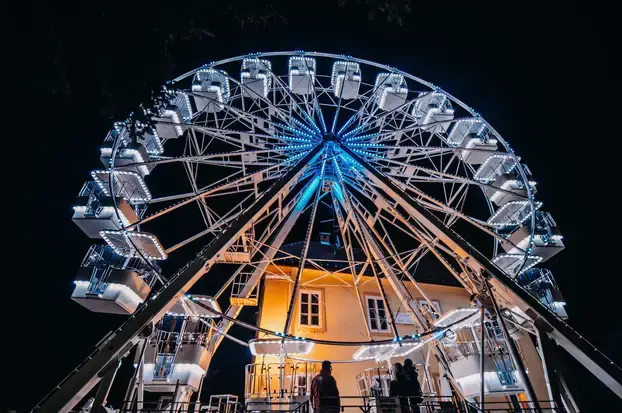
What to Do & How to Make the Most of It
- Early evening stroll through Ban Jelačić Square and the main ice-rink gives you a meaningful experience without the biggest crowds.
- Get up to Strossmayer Promenade for panoramic views of the city lights and market ambience.
- Try local treats like fritule (small donut-like sweets) and hot mulled wine with Croatian liqueurs.
- Incorporate a cultural moment: look for local live music performances in the market squares (these can be free).
- Weather: Zagreb in December can be 0-+5 °C, often damp; dress for the cold and bring a scarf (wind from the plains).
- Safety & culture: Pick stalls marked “local artisan” if you can; it supports small producers. Public transport is good; avoid driving in old-town zone in winter weather.

Planning Advice
- Book accommodation 2-3 months ahead — less congested than some Western European cities but still popular.
- The market goes until early January, so there is flexibility if you want post-Christmas travel.
- If you want quieter experience, aim for early December rather than the week before Christmas.
- Sustainable tip: Use public transit (Zagreb has a good tram network), bring your own reusable cup if you will be sampling hot drinks.
5. New York City, USA – Midtown Holiday Market + Winter Village
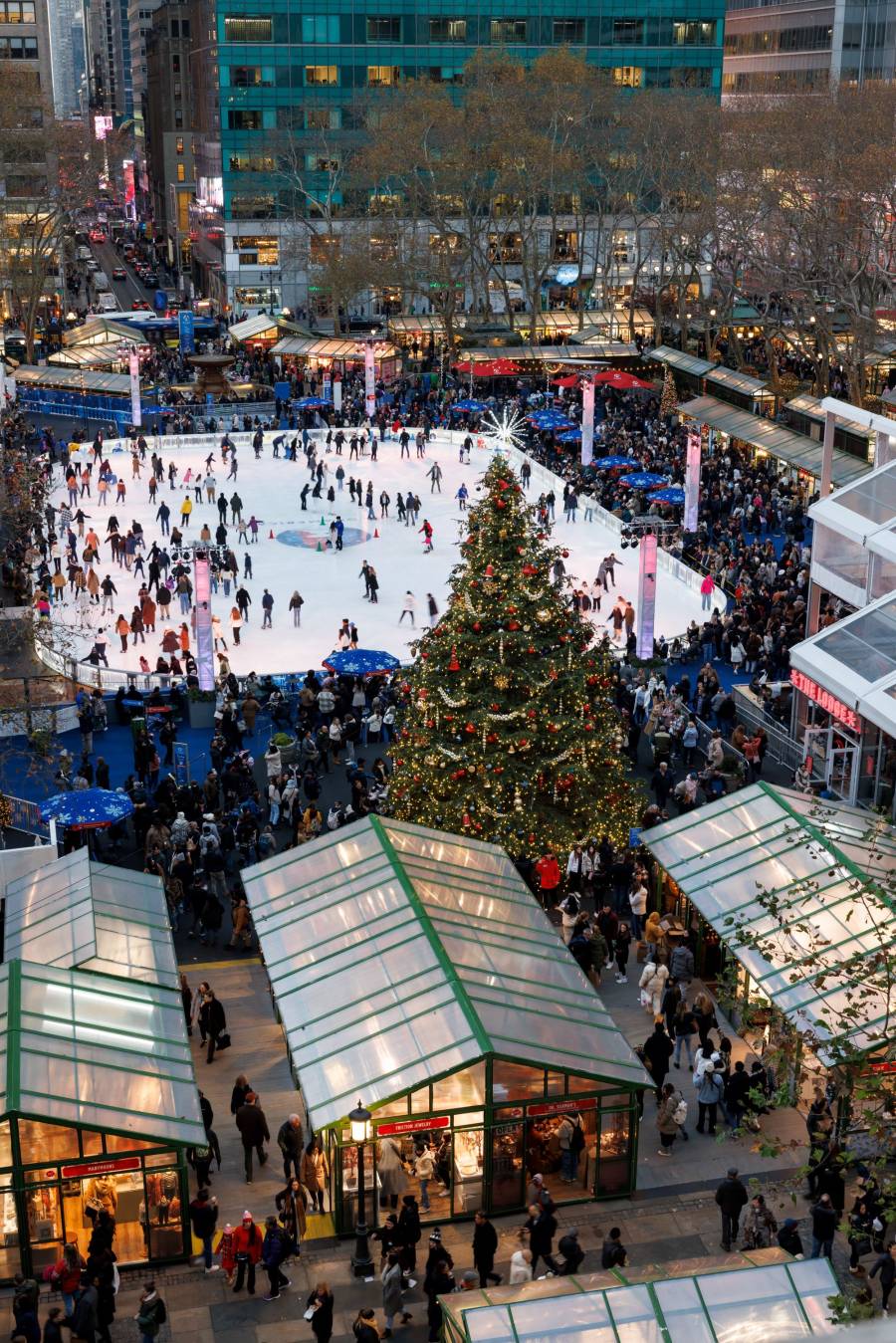
Tradition
In the US, one of the most iconic holiday markets is the Bank of America Winter Village at Bryant Park in Midtown Manhattan. Modeled after the European “Christkindlmarkt”, it launched in 2002 with about 80 vendors in the park’s lawn area. Yes, you can ice skate at Rockefeller Center underneath the big tree, but Bryant Park is where New Yorkers get their Christmas spirit on.
The ice-skating rink was added in 2005, and now the market features over 170 shops and a full set of winter village activities. It may not have 15th-century medieval roots, but it’s become a modern holiday tradition for New Yorkers and visitors alike. It transforms a central urban park into a festive marketplace, skating rink, chalet-style food hall, and immersive experience.

What to Do & How to Make the Most of It
- Timing: The 2025 Winter Village opens 24 October 2025 (mid-October) and runs to early March 2026 in some form. Visit in late November or early December for vibrant atmosphere with fewer extreme crowds.
- Skate on the rink at Bryant Park — the admission is free but skate rental has a fee. Renting early when fewer people around gives you better ice time.
- Browse the artisan kiosks for gifts, but also support local NYC vendors — choose booths flagged as “minority-owned” if you want to travel responsibly.
- Food-wise: Try seasonal treats, warm drinks; there are igloos you can book if going with a group (great for a special evening).
- Weather: NYC in late December can be around 0-5 °C, but wind can make it feel colder. Dress warm, use layers, bring waterproof boots as there could be slush.
- Safety & culture: Midtown Manhattan is busy — use public transit (subway), avoid leaving valuables visible if sitting outdoors. Respect park rules (e.g., skating safety, no trampolines).

Planning Advice
- Book skating slot/gear rental ahead if available online to avoid long waits.
- For accommodation, aim for at least 3 weeks ahead in December; the city is busy with holiday travel.
- Bring reusable cup or check if the vendors charge for hot drink cups — some sustainable markets now have deposit-return systems.
- Evening visits: plan for the commute back (subway lines can be crowded). Consider staying in or near Midtown to minimise late-night transit stress.
6. Brussels, Belgium – Winter Wonders Market & Waffles

Tradition
The Winter Wonders Brussels market is one of Belgium’s premier festive events, held across Brussels’ central squares (Grand-Place, Rue de la Bourse, Place Sainte-Catherine). According to travel sources, the 2025 edition is scheduled from 28 November 2025 to 4 January 2026.
While Belgium’s market tradition is younger than some German markets, the city has embraced the holiday festival concept with lights, ice rinks, artisan stalls and big crowds. Socially and historically, Belgium has been situated as a crossroad in Europe (French/Dutch influences) and the market in Brussels reflects this mix of tradition and modern festivity: waffles and chocolate meet carols and crafts.
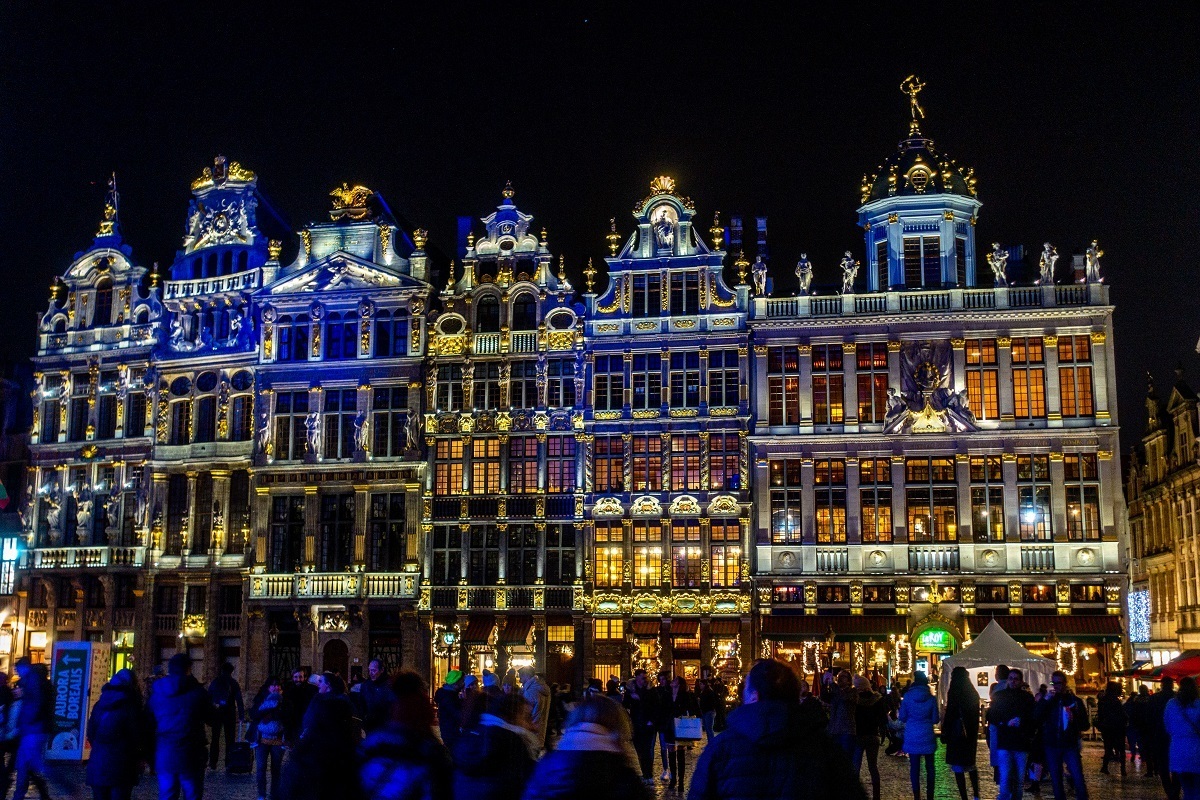
What to Do & How to Make the Most of It
- Visit at twilight when the light show over Grand-Place begins, the historic façade gets illuminated and the atmosphere is spectacular – definitely a can’t miss.
- Taste Belgian seasonal specialties: artisanal chocolate, waffles, speculoos, mulled wine. Choose stalls that indicate local production.
- Combine the market with a visit to the Atomium or simply wander the nearby streets decked in holiday illumination.
- Weather: Late November into December can be cold + damp. Bring waterproof outerwear and good walking shoes (cobbled streets get slick – you’ll want treads on your boots).
- Safety & culture: Brussels is a major city so usual metropolitan precautions apply. If you rent a car, parking in the city centre is difficult, you’re better on public transit. Plus, Brussels is exceedingly walkable.
Planning Advice
- Book hotel in the city centre or just outside (30mins commute) for convenience.
- Crowd levels: the weekends between Thanksgiving and New Year get busy — visit early in the day for shopping.
- Consider staying into early January if you want slightly better rates and fewer crowds.
- Plan a side trip to Bruges – a quick train ride and a charming little town at the holidays – visit the chocolate factory.
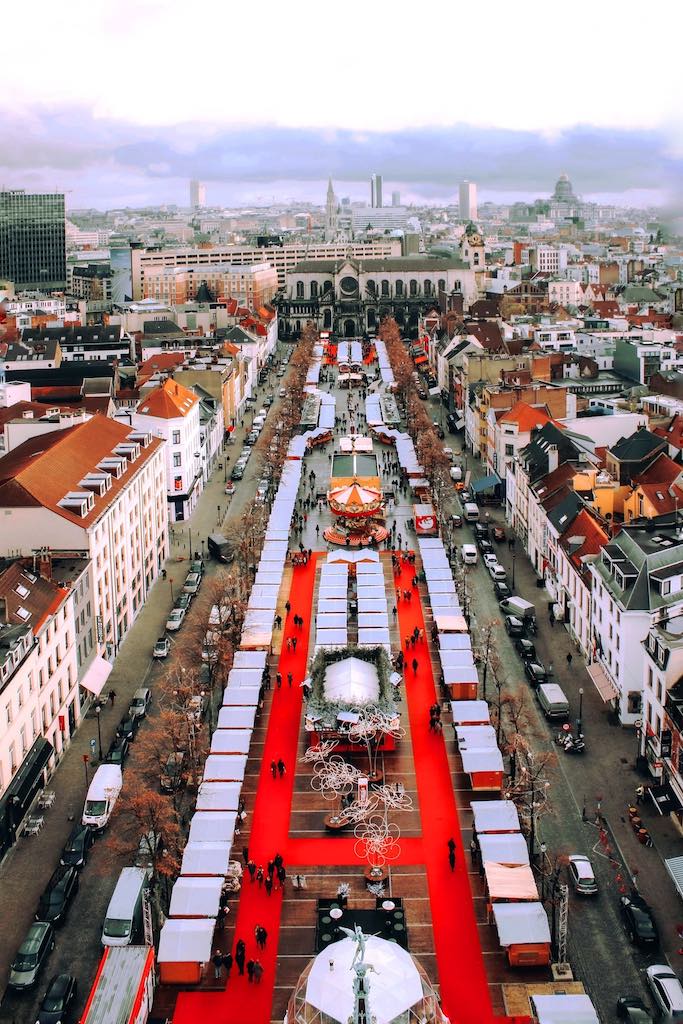
7. Budapest, Hungary – Lights, Ice-Skating and Thermal Baths
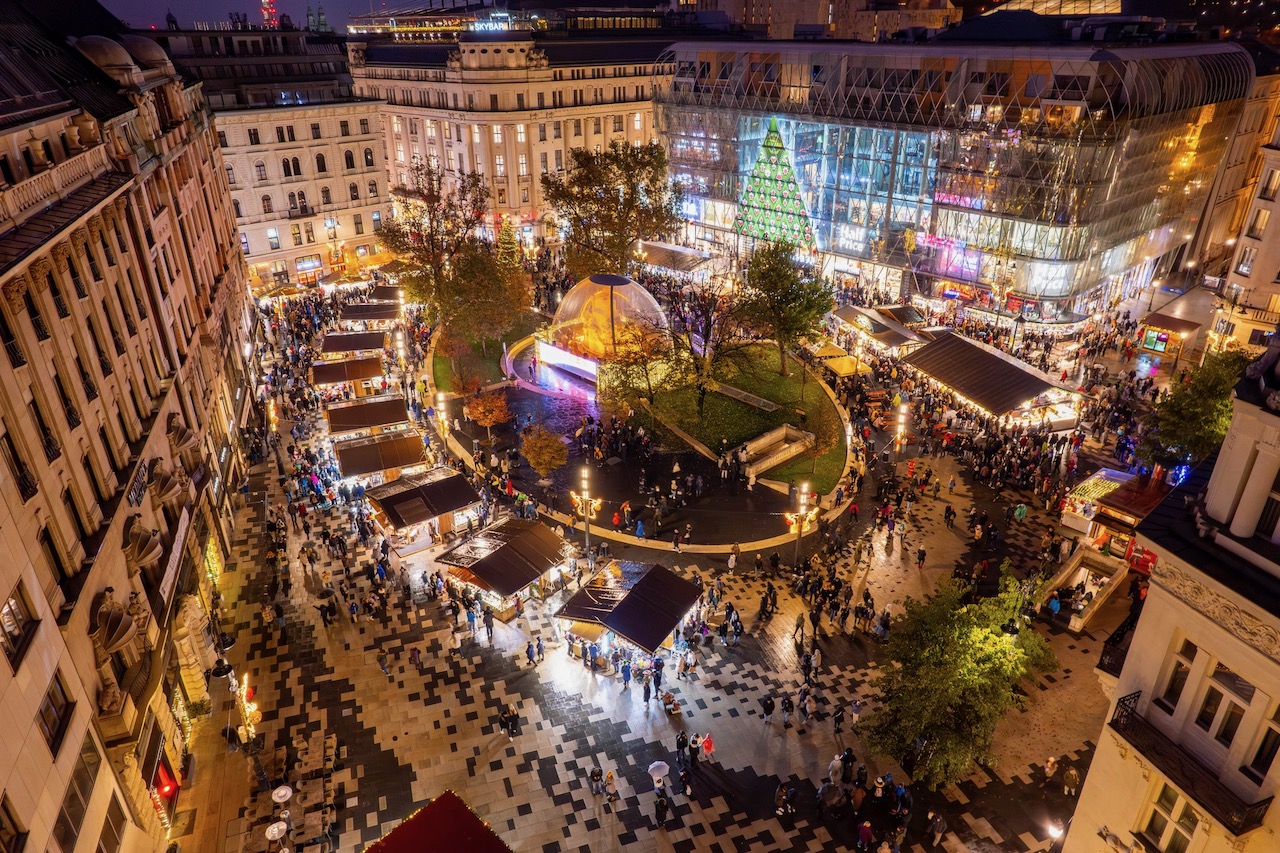
Tradition
Budapest’s Christmas market scene is less ancient than many of the German or Austrian ones, but the city has embraced the festive market culture in a major way. Travel listings highlight its sparkle and originality: ice-skating rinks, historic architecture, light shows and Hungarian craft products.
The broader Christmas market tradition itself — wood-hut stalls, seasonal foods, Advent fairs — traces back to the Late Middle Ages, particularly in the German-speaking part of Europe (markets documented in the 1300s and 1400s). In Budapest’s context, the market is embedded in this Central European tradition but also shaped by Hungarian cultural elements: thermal-bath culture carries into winter, folk crafts show up alongside modern design, and the Danube-bend architecture adds ambiance.
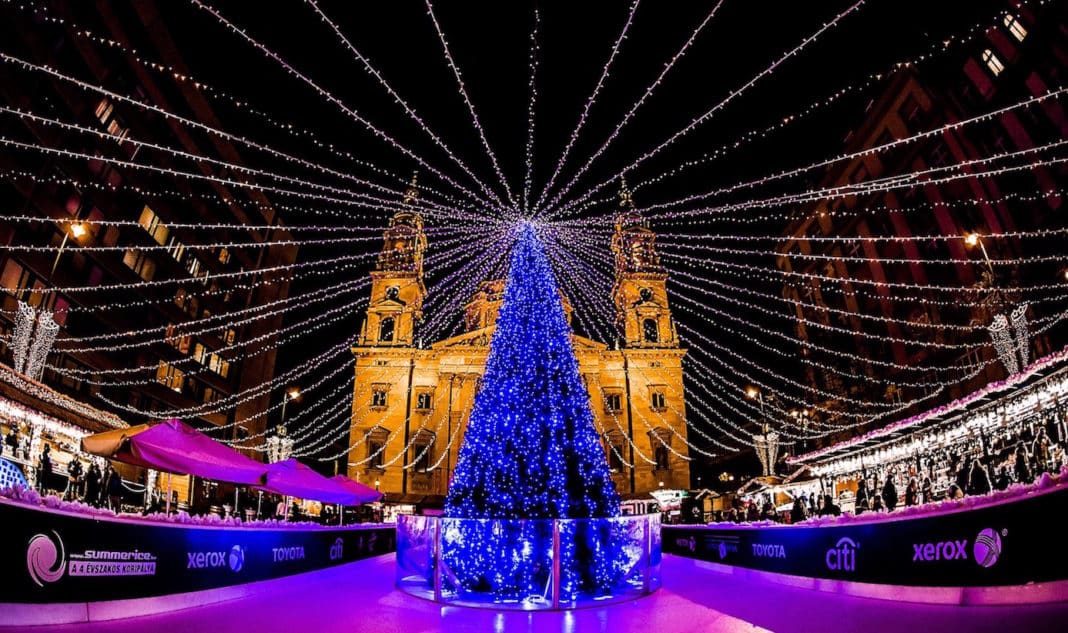
What to Do & How to Make the Most of It
- Visit the market at Vörösmarty Square (Vörösmarty tér). Go in the early evening for lights.
- Combine browsing the market with a soak in a thermal bath (e.g., Széchenyi) — the winter steam plus Christmas lights feel magical and help you warm up.
- Try local snacks: chimney cake (“kürtőskalács”), lángos, mulled wine with Hungarian spiced rum.
- Weather: Budapest in December often sees 0 to +5 °C; wind off the Danube can make it feel colder. Dress in layers, bring scarf and gloves.
- Safety & culture: Metro and trams are convenient; keep an eye on belongings on crowded trams. For a cultural sustainable angle, buy from stalls marked “Hungarian artisan” rather than mass imports.
Planning Advice
- Book your stay at least 2–3 months in advance for December weekends (especially if you also want to visit adjoining thermal spas).
- Arrive early (just when the market opens) to beat crowds and pick up best craft items.
- If you visit after Christmas (e.g., late December) you may find fewer stalls but fewer crowds too — good trade-off.
8. Copenhagen, Denmark – Tivoli Gardens & Nordic Hygge

Tradition
Copenhagen draws on Nordic holiday traditions and the ‘hygge’ concept (cozy togetherness) for its Christmas markets. According to recent travel press, Copenhagen, sometimes dubbed the “world’s happiest city,” hosts multiple festive markets (including one at Tivoli Gardens) with rides, ice-rink, mulled wine (gløgg), crafts, and thousands of lights.
The broader tradition of markets and gatherings during Advent in Scandinavia is younger than the medieval German fairs, but parallels exist: small wooden huts, seasonal foods, community gathering, church carols. The Danish take adds amusement-park rides and design-led crafts to the mix.
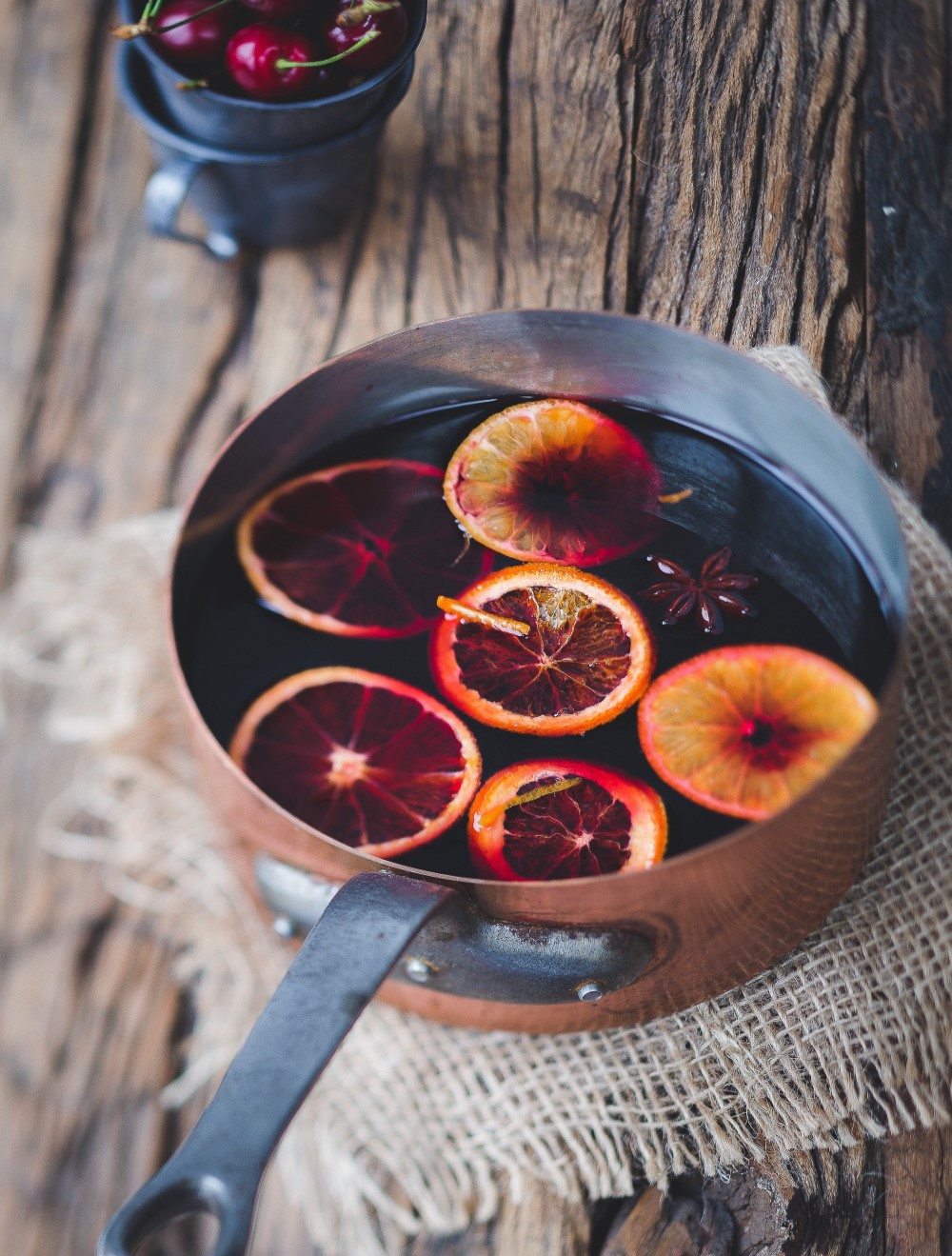
What to Do & How to Make the Most of It
- Visit the market inside Tivoli Gardens: combine holiday shopping with funfair rides — an excellent choice if you’re travelling with friends or kids.
- Explore the Nyhavn harbour area market and smaller neighbourhood stalls for a quieter experience.
- Sample Danish seasonal fare: gløgg, æbleskiver (fried pancake balls), roast nuts. Seek out local honey or craft ceramics as gifts.
- Weather: December in Copenhagen is cold (−1 to +3 °C) and often windy. Rain or sleet possible — bring waterproof outerwear, warm layers, and hat/beanie.
- Safety & culture: Danish cities are safe and high quality, but respect local norms — minimal fuss, polite queuing. Choose locally-made goods when possible (look for “made in Denmark” tags).
- Sustainability: In Copenhagen many markets emphasise local craft and sustainable materials; seek recycled decorations and avoid single-use plastics.

Planning Advice
- For best value, book lodging outside the city-centre and use the metro/trams into town.
- Check whether rides at Tivoli require separate ticket or pass.
- Visit early December (1-10 Dec) to avoid heavy tourist influx; evenings get very busy closer to Christmas.
9. Innsbruck, Austria – Alpine Market & Winter Adventure

Tradition
Innsbruck, nestled in the Austrian Alps, offers a holiday-market experience with a mountain backdrop. While specific market history may not be as ancient as Vienna or Nuremberg, the Tyrolean region has long embraced winter festivals, fairs and traditions. Travel resources list Innsbruck as among the most romantic alpine winter destinations for Christmas market experiences.
The wider tradition of Christmas markets (as discussed earlier) stems from late-medieval German-speaking territories — markets where helper traders supplied goods in the cold season, gradually morphing into festive gatherings. In Innsbruck you combine that tradition with winter sport culture, alpine architecture, and snowy landscapes, which gives a distinctive flavour.
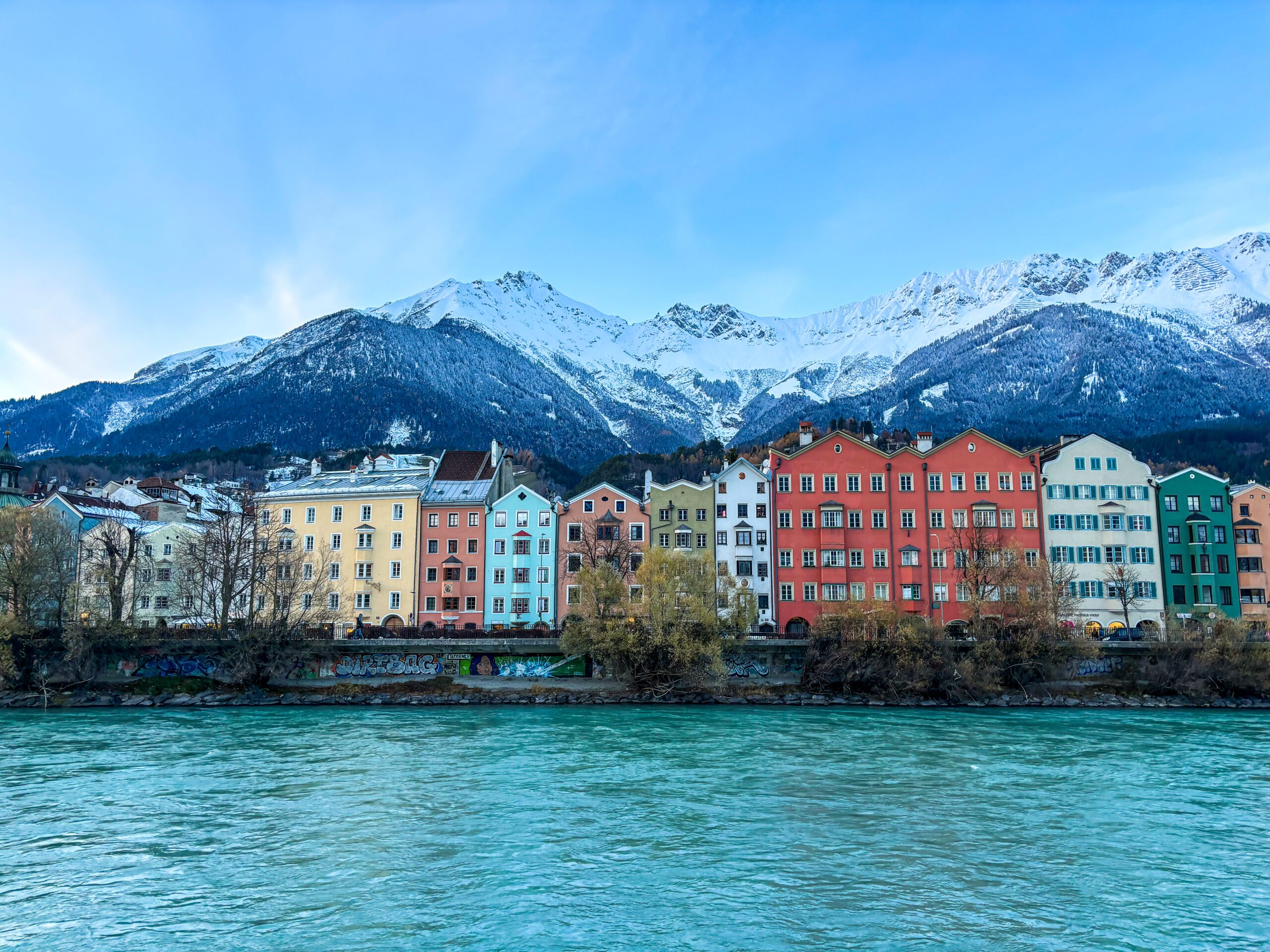
What to Do & How to Make the Most of It
- Visit the Altstadt (old town) market: wooden huts under the Golden Roof (Goldenes Dachl) and mountaintops in view.
- For a twist: take the Nordkette cable car up for mountain views and then return to the market for a warm drink.
- Try Tyrolean specialities: cheese fondue, kraut burgers, mulled cider. Shop for local handicrafts: carved wooden figures, Tyrolean hats.
- Weather: Expect snow, cold (often −5 to +2 °C). Good boots with grippy soles advised. Afternoon slopes mean earlier dusk — bring a headlamp or illuminate clothing if walking after dark.
- Culture & safety: Be aware of altitude and mountain weather changes. Use proper gear if venturing higher. In town, follow standard city-stay precautions.

Planning Advice
- Book lodging early (especially if you want a view of the mountains or hotel with spa).
- If you also want to ski or snow-shoe, coordinate your market stay with alpine resort bookings.
- Consider staying a couple of nights to acclimatize and enjoy both the town market and mountain excursion.
- For sustainability: choose locally-run mountain guides, shops selling locally-made goods rather than imported souvenirs.
10. Reykjavík, Iceland – Nordic Holiday Markets & Winter Light

History & Tradition
Although not always the first destination that comes to mind for a Christmas market, Reykjavík offers a unique winter-holiday experience: northern lights, long twilight, Nordic design markets and a distinctive cultural context (Icelandic traditions, Vikings, small-town community feel).
Traditional Icelandic Christmas folklore comes with a whole unique set of characters. At the center are the 13 Yule Lads (Jólasveinar), mischievous brothers who descend from the mountains one by one from December 12–24. Each has a wonderfully specific hobby (and name): Spoon-Licker, Door-Slammer, Sausage-Swiper, Skyr-Gobbler, and more. Kids leave shoes in the window; if they’ve behaved, a Lad drops a small gift. If not, a raw potato might appear. The lads’ mom is Grýla, an ogress who supposedly sniffs out naughty children in winter; her legend likely grew from medieval cautionary tales meant to keep kids close during deadly storms. Grýla’s partner, Leppalúði, is more laid-back but no less looming in the sagas.
Then there’s the iconic Yule Cat (Jólakötturinn), a giant feline said to prowl the countryside and pounce on anyone who didn’t receive new clothes for Christmas, an incentive to finish the autumn wool work and look out for your people. Historically, these characters blended farm-life rhythms with dark winter humor; over time, the grim edges softened. Today the Yule Lads show up at Reykjavík festivities looking cheeky rather than scary, handing out treats and singing.

What to Do & How to Make the Most of It
First, check out the Cerca Guide to Iceland.
- Wander the old harbour area and check for outdoor market stalls (often in December) offering Icelandic wool goods, local art, hot chocolate, and glögg.
- Combine market browsing with a northern-lights tour or geothermal-pool visit (the Blue Lagoon is the most famous and about 45 minutes from the city center). Artisan stalls by day, aurora borealis by night.
- Weather: Iceland in December is cold (−2 to +4 °C), windy, and daylight hours are short (just a few hours of light). Waterproof outerwear, thermal layers, and good night visibility gear are essential.
- Safety & culture: Stay on marked paths in winter (ice and wind make surfaces slick). Respect local environment (don’t venture onto unsafe coastlines in winter – the weather in Iceland can turn on a dime). For culture: support Icelandic artisans and avoid buying cheap imports.
- Sustainable tip: Many Icelandic goods are made from local wool and sustainable materials — great to buy responsibly. Use public buses in Reykjavík rather than rental car if you only stay in town.
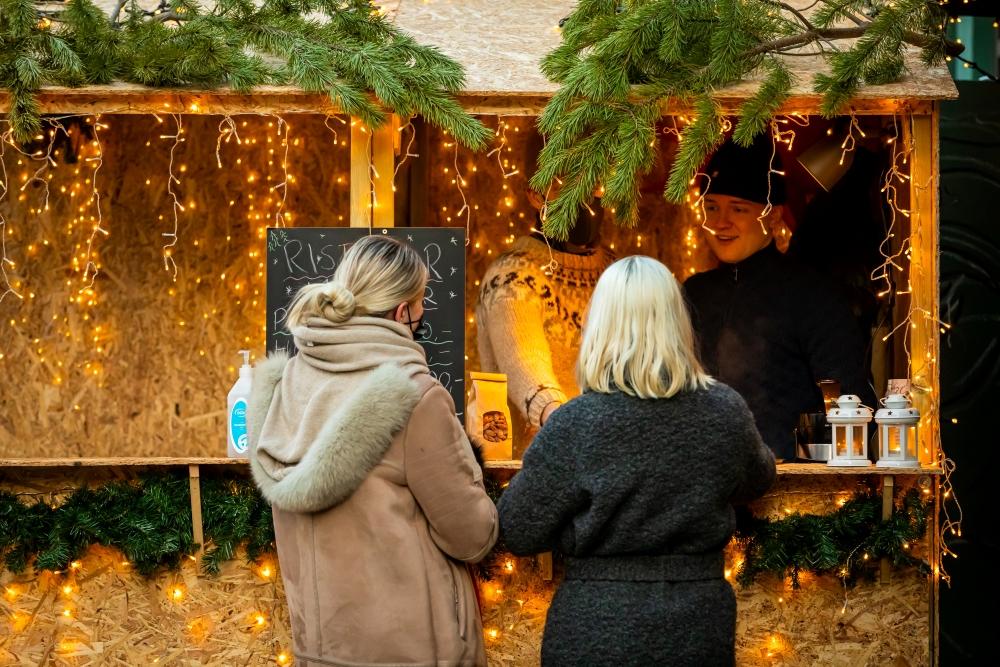
Planning Advice
- Book your lodging early, especially if you want to catch northern lights and market stay.
- Flights in December may be slightly more expensive; consider arriving early December for better rates.
- If you plan a day-trip or tour outside the city (e.g., Golden Circle, Blue Lagoon) check snow/ice conditions ahead and dress appropriately.
- For the market element: check local Reykjavík tourism board for exact dates (they may vary).
Honorable Mention: Barcelona
There really is nothing like the magical pooping log of Christmas. Listen to this episode of Passport for the full story.
May your 2025 festive travels be warm, wonderful and full of discovery!